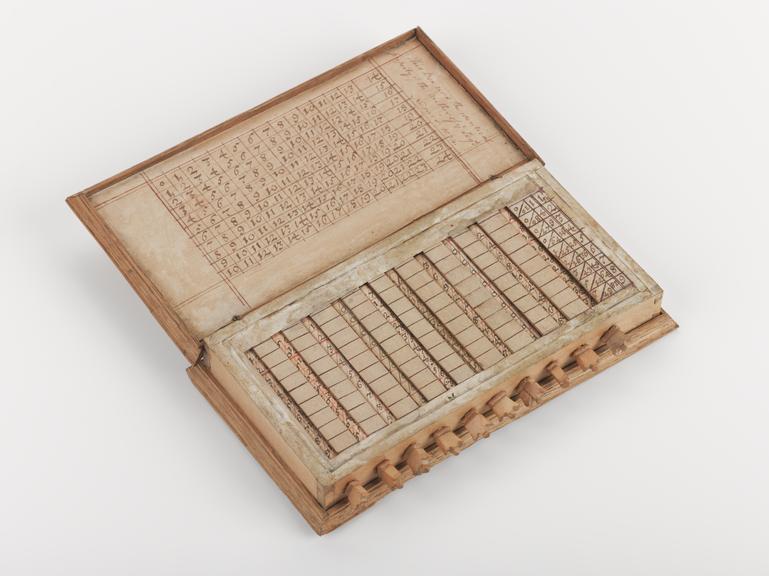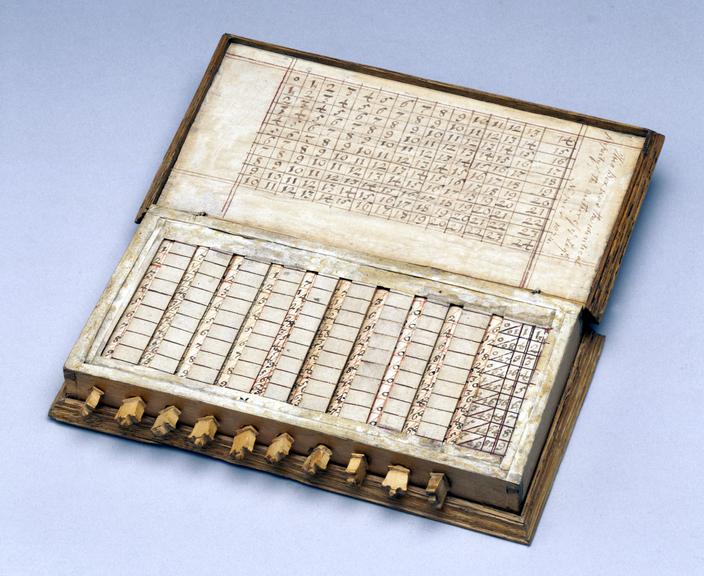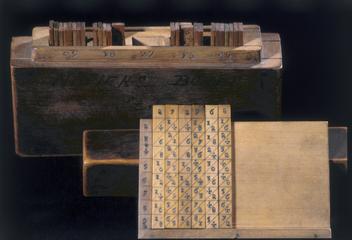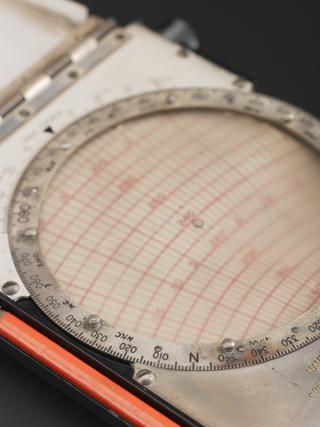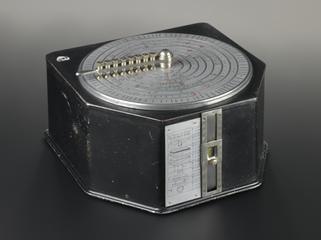Cylindrical form of Napier's bones
Original Napier's Rods, cylindrical arrangement in wooden box with ten figured rollers; inside lid inscribed "This box was the identical property of the author of ye Logs, Napier 1824" (wire, hingeing lid to box, broken) from the library of the Lord Napier and Ettrick
More
Napier's bones, cylindrical arrangement in wooden box with ten figured rollers; inside lid inscribed "This box was the identical property of the author of ye Logs, Napier 1824" from the library of the Lord Napier and Ettrick. This type of Napier's bones was first published by Gaspard Schott in 1668, so it is unlikely that they were the property of the inventor. Napier's bones, invented by John Napier in 1617, allowed multiplication to be performed as a series of additions.
- Object Number:
- 1925-801/1
- type:
- napier's bones




